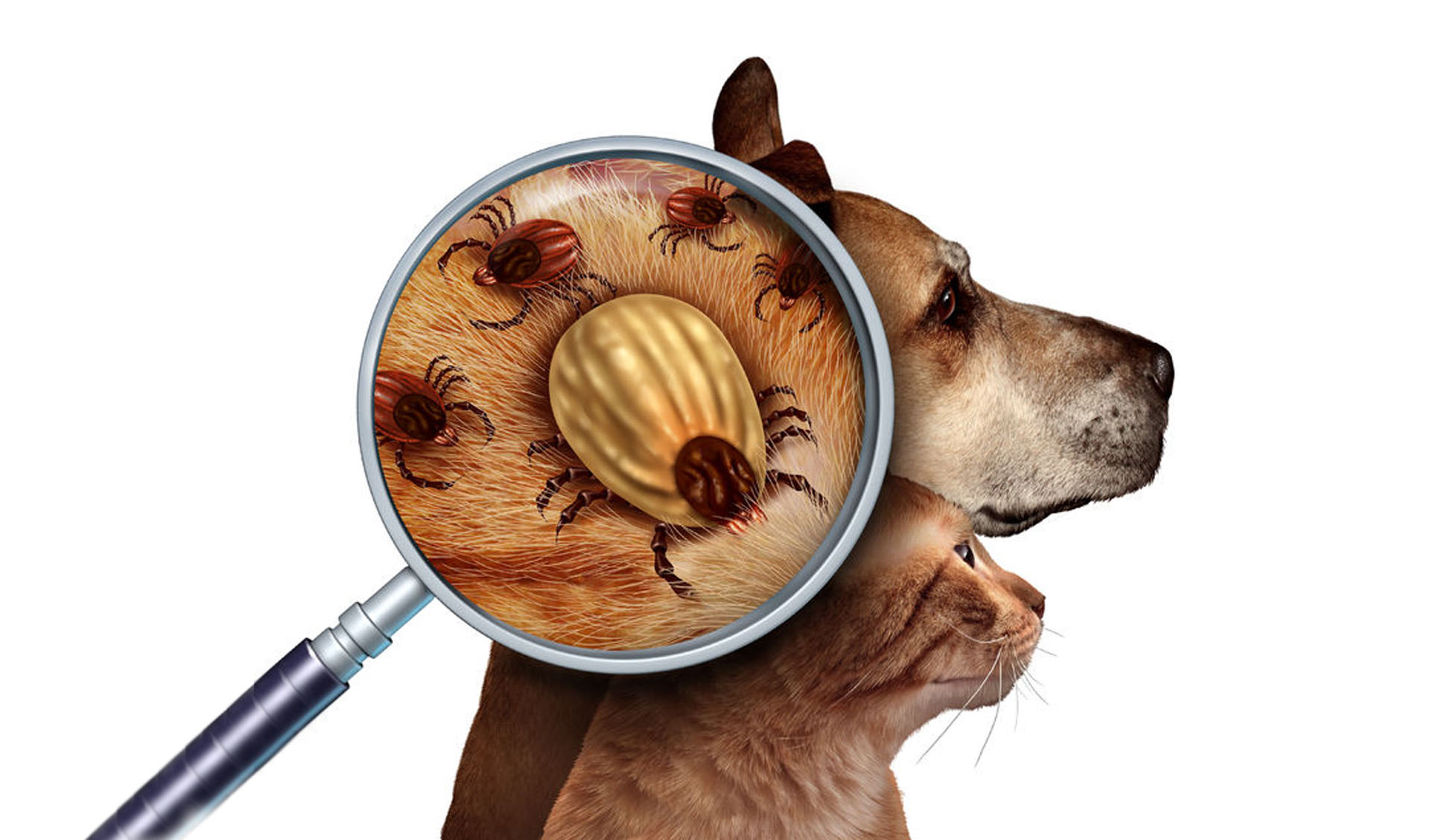If your pet spends time outside, especially in tick populated areas, a tick check should be a part of your daily routine. Since it can take 24 to 48 hours for an attached tick to transmit an infection to your pet, it is important to promptly and properly remove these parasites.
If you suspect that you have found a tick, it is best to first ensure that what you are about to remove is in fact a tick. Begin by separating your pet’s fur around the tick and look for legs on either side of the body. Ticks are usually gray, tan or brown in color and can be difficult to spot. If you have any doubt that what you’re looking at is a tick, it is best to visit your veterinarian. If you do find a tick, do not panic! Follow these simple directions to safely remove the parasite from your pet.
Things needed:
- Fine point tweezers or tick removing device (such as a Tick Twister®)
- Pair of gloves
- Ziploc bag or plastic container
- Antiseptic
- Isopropyl alcohol
It is best to wear gloves while removing a tick to minimize any direct contact with the tick itself or the bite area. Ticks can carry infectious agents that may enter your bloodstream through cuts or cracks in your skin or through mucous membranes such as your eyes, mouth and nose.
If you are using tweezers:
First, apply a small amount of rubbing alcohol to the bite area. Using a pair of tweezers, grasp the tick as close to the animal’s skin as possible (be careful not to catch any of your pet’s skin in the tweezers). Pull straight outwards with a steady and even motion.
If you are using a tick removing device:
Apply a small amount of rubbing alcohol to the bite location. Gently press the remover on your pet’s skin and slide the notch of the remover under and around the tick to hook the tick. Gently lift the hook and turn it, the tick will detach by itself after 2 or 3 rotations.
Once the tick is safely removed place it into a plastic container or zip-lock bag with some isopropyl alcohol (which will quickly kill the tick). Clean the bite area with an antiseptic and apply an antibiotic cream (such as Polysporin). Continue to closely monitor your pet and the bite area over the next few weeks for any signs of infection. If the area ever appears red or inflamed or if your pet begins to display symptoms of a tick-borne illness (lameness or arthritis lasting more than 3-4 days, lethargy, swollen joints, fever, loss of appetite or neurological problems), consult your veterinarian.
Transmitted tick-borne illnesses are often asymptomatic during early stages, meaning your pet may not exhibit any signs of illness for several months after being infected. It is recommended to bring the removed tick (alive or deceased) to your veterinarian to be tested for tick-borne illnesses. Lyme is one of the most common transmitted diseases from ticks. It is recommended to test your pet for Lyme disease 6 weeks after seeing a tick on your pet to ensure they have not contracted the illness. Annual Lyme testing is recommended to screen your pet as ticks can often go unnoticed creating a risk for transmission.
IMPORTANT
- Do not twist or jerk the tick away from the skin. This may leave the tick’s mouth parts embedded in your pet.
- Do not squeeze of crush the body of the tick. This may cause the tick to regurgitate saliva back into your pet which can lead to an infection.
- Refrain from using methods such as burning or applying petroleum jelly or alcohol to try to kill the tick. This could cause the tick to deposit more disease-carrying saliva in the wound.


